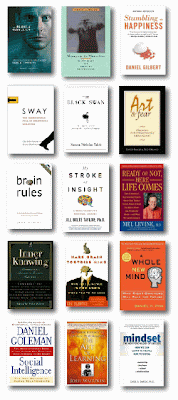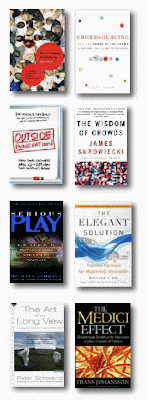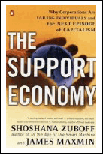
Whenever we are presuming that people will learn from what we're designing, saying, or presenting graphically, we are making assumptions about our brains. We are relying on a theory of how our minds function when presented with additional information in the context of other's expectations. Refining my own "theory of mind" has fascinated me for years. Here's some of the highlights in how my own theory has evolved most recently.
Psychiatrists in Freudian and Jungian traditions have posited an unconscious mind that harbors a deep well of energies, urges and imagery. Recent advances in cognitive neuroscience research have verified how much we know without conscious awareness.
The Robot's Rebellion reveals how we get overtaken by survival, mating and dominance instincts, as if our genes are running the show.
A Stranger to Ourselves explores how 90% of our learning is unconscious and available for us to know without reasoning or thinking it through.
Stumbling on Happiness explains why we are such poor predictors of what will make us happy and so inclined to make purchases or commitments that fail to satisfy us. In all three books, it's evident that we know a lot more than we admit to knowing, think we already know or identify with being capable of using resourcefully
Many patterns have been identified in our poor judgment, skewed perceptions and irrational urges.
Sway - the irresistible pull of irrational behavior reveals lots of the psychological undertow that drags us into being our own worst enemy.
The Black Swan portrays our delusional constructs which continually expect more of the same "white swans" and mediocre, predictable, business-as-usual circumstances.
Art and Fear explores how we talk ourselves out of our creative expressions, explorations and evolutions with our fears, hang-ups and contrived obligations.
Other research has made it clear how often we work against the ways our brains function.
Brain Rules reveals what variety, rest and explorations our brains need to function optimally. These rules show how dysfunctional it is to try and be productive in classrooms and cubicles.
My Stroke of Insight gives us an inside look at functioning entirely with our right side and without the left hemisphere of our neocortex brains. These insights show how much we're missing when we exclude right brain resources in our logical, rational, linear activities.
Ready or Not Here Life Comes delves into the neuroscience of learning disabilities. From these discoveries we can realize how incredibly taxing it is for our brains to read printed words and write coherent sentences.
Inner Knowing explores how well our brains function when we expect ideas to come to mind from "out of the blue".
Hare Brain Tortoise Mind reveals how fast our unconscious can come up with ingenious responses when we stop interfering with our sluggish, glucose-burning thought processes.
A Whole New Mind suggests our economy has evolved past the dependency on left brain functionality and is coming to rely on left/right brain integration.
I've always had a felt sense of being affected by other people's states of mind and emotion.
Social Intelligence reveals findings how those subtle influences between minds occur.
The Art of Learning explores how deeply are minds are affected by coaches and rivals in competitive situations which then raises the stakes on becoming a world class chess player, warrior or athlete.
Mindset contrasts the fixed outlook which keeps learning to a minimum with the growth mindset that values exploration, useful mistakes and risky challenges.
As I've incorporated all these insights into my own theory of mind, it's become clear we need some major changes in how we support others' learning. That has provided the impetus to my recent writing about "disrupting school work", "
PLE 2.0" and "
pro-learning ecologies".






